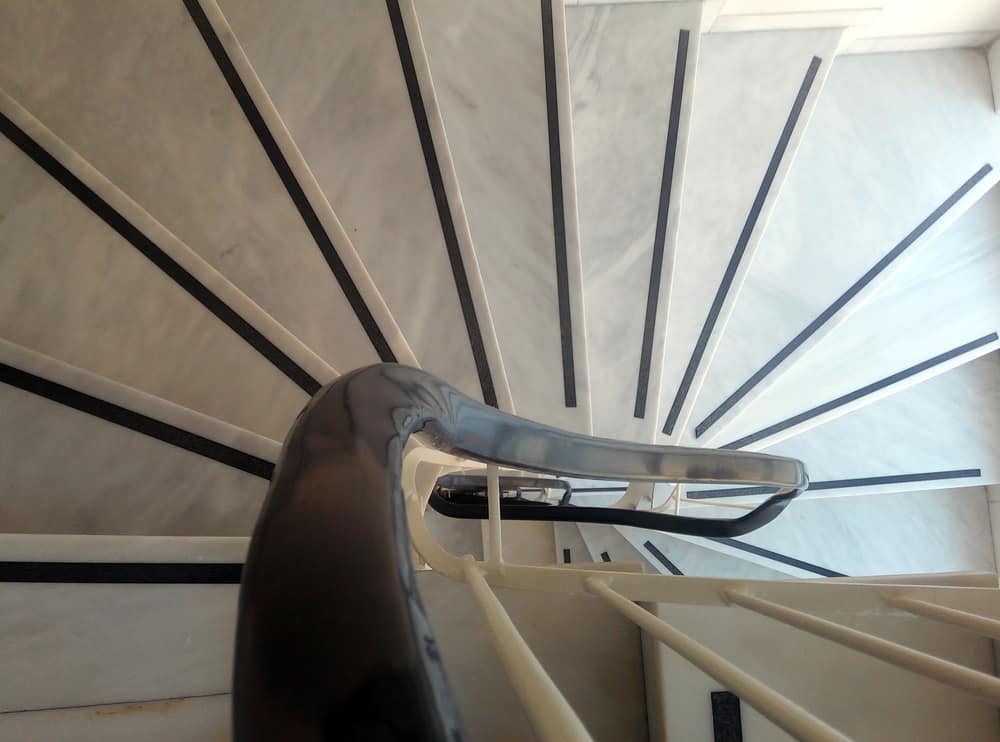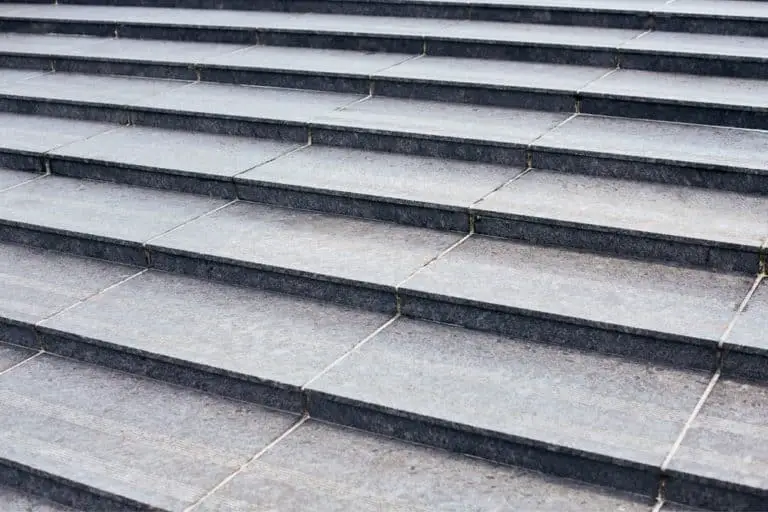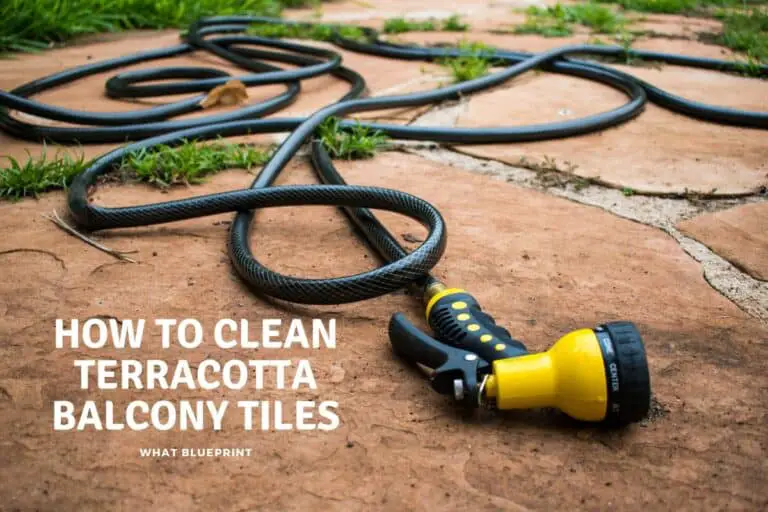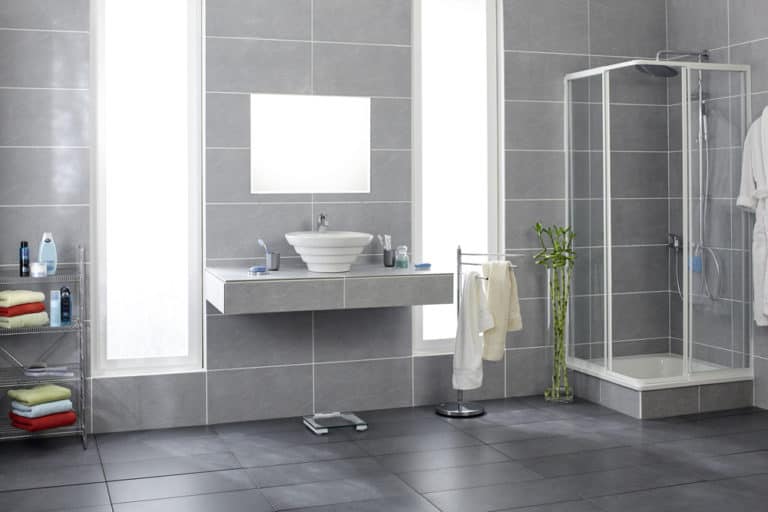This Is Why Stairs Have A Lip (Or A Nosing)
It’s estimated that around one million stair-related accidents occur every year. Designers and building codes constantly try to find ways to make stairs easier and safer to use to prevent accidents. Stair lips/nosings are one of those design interventions.
Stairs have nosings to make the stairs easier to use. Specific benefits of adding nosing to a stair include making the stairs safer, more visually appealing, and generally more functional.
Read on as we’ll be going into how stair nosing works, why designers add them to stairs in the first place, the different types of stair nosing, and how you can add stair nosing to your home.
How nosing help stairs work
When it comes to thinking about designs and finishes for stairs, an architect/designer has to look at the stairs from going upstairs and going downstairs. These might sound trivial or unimportant, but there’s a reason why different types of stairs have different types of nosing.
Here are the benefits that nosing provides to a staircase for its users:
- Improved visibility
Some stair nosings are a different finish compared to the rest of the staircase. It helps users visually see and to be able to easily tell apart the individual steps of the stairs.
- Increased area
Stairs that have a lip to help make the stairs easier to use by increasing the tread area of the stair’s steps. This also allows for more options when choosing the design for your railings since you have more space to work with.
- Changes how stairs are used
When nosing is present, our tendency as users typically presses our weight a bit past that. From a visual point of view, the lip of a stair is often extruded and does not appear to be supported by the rise of the stair (even if it is). This causes users to tend to place their weight deeper into the step.
- Increased safety
You can already guess by the other points mentioned that one of the main benefits of the stair’s lip is the safety measures that it provides for its users. It’s important to reiterate this because stair-related accidents are one of the most common types of household accidents.
- Improves stair’s longevity
Stair nosing prevents users from chipping into the stairs because stair nosing changes how a person steps on the treads of the stairs. This reduces wear-and-tear and thus makes your stairs last longer.
- Improves the stair’s general look
Stair nosings make stairs look finished. The extra details that it adds, as mentioned earlier, make each step distinct. The design of the nosing can make the stair steps look bigger, thicker, and generally nicer.
Different types of stair nosings
Different types of stair nosings each have their own distinct look and benefits. There is no better or worse, only what best applies to the current context (usage, design, etc.) of your stairs.
These are the five different types of stair nosings. They may be labeled as many different names (Bullnose, Shark head, etc.), but for our purposes, it’s a lot easier to remember them based on the angles that the nosings make.
- Inward
As the name implies, inward nosings are nosings that are slanted towards the step. This provides the same amount of area for the tread that the nosing is on while reduces the vertical space that the nosing takes up.
To make it simple to remember, inward is when the face of the nosing is facing away from the users.
- Outward
Outward nosings are nosings that are slanted away from the step. This is a great choice of nosings for those transporting objects with wheels on them, such as wheelchairs, regularly. The slanted angle provides a slope that makes it easier for wheels to make it up to the next step.
Outward is when the face of the nosing is facing the users.
- Square
Square nosings are nosings whose face is perpendicular to the tread below it. Since square nosings have a neutral angle, it’s usually for general uses.
- Round
Round nosing, as the name implies, is nosings with a curved surface. Among the different types, round nosings are the biggest in size, and their radius is often limited to a certain measurement.
- Unextended
Unextended nosings are nosings that stay within the original measurement of the stair’s treads. All the types of nosings listed above can also be unextended nosings. Generally, unextended nosing is used to make the stairs safer.
An important thing to note is that it’s generally recommended to ensure that the nosings of your stairs do not have any sharp edges.
Regardless of the type, having edges on your nosings damages your stairs (by providing a point where forces can concentrate) and makes them less safe to use.
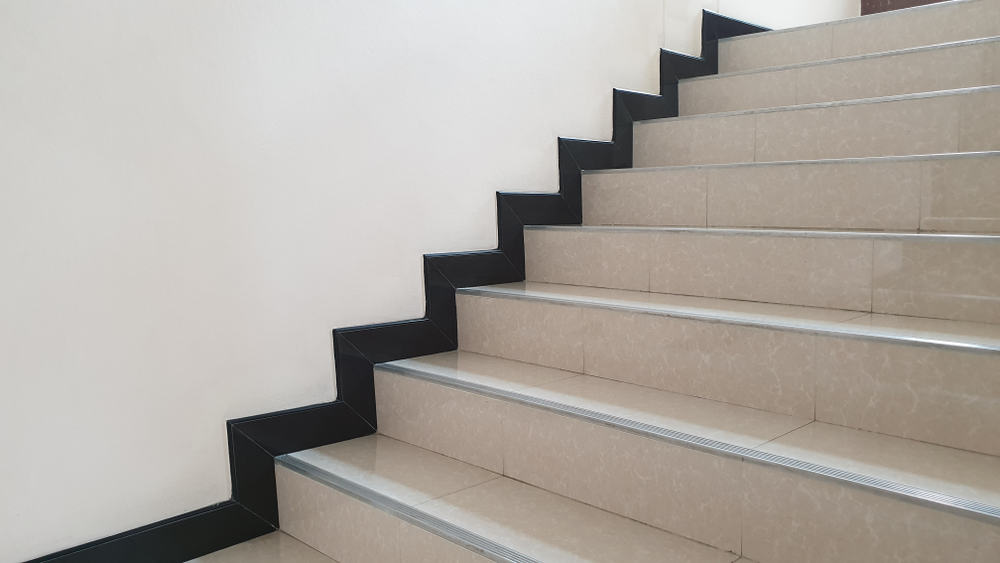
Requirements for stair nosings
Stair nosings, just like any part of a building, are standardized within a set range of measurements by your local building code.
As each country’s building code will have its own range of measurements, we’ll only be going into the general parts/characteristics of nosings that have to follow a standard.
- Nosing projections
Your local building code will most probably have a section about how extended your stair nosing can be over the previous thread. This is to prevent overextended nosings that can make it difficult for users to climb up/down the stairs.
Remember that stairs are viewed differently when you’re going up/going down. Overextended nosings can cover the step below it too much if you’re going down.
- Nosing design
Nosings are only supposed where the tread and the riser meet. Having nosings that go too much into the tread or the riser will affect the usability of the stairs.
Since it’s already standard practice to have the nosing only located at the corner of the step, it can confuse the users.
These are the two main guidelines that you should consider if you plan on installing/changing the nosings of your stairs.
Adding stair nosing to stairs
We’ll now be going into a brief step-by-step outline as to how nosing is installed onto stairs. This is not an installation guide. This is to give you a general idea of how nosings are installed on a staircase.
- Preparing the stairs
Clear space on the face of the riser to make way for the nosing.
- Preparing the nosing
Adjust the nosing to the appropriate size. Use the width of the stairs and the measurements of the riser as a basis on how you’ll be sizing your nosing.
- Attaching the nosing
Use adhesives to attach the nosing to the face of the riser.
- Finishing
Seal up any gaps between the riser, tread, and the newly installed nosing with a sealant. Use a paint that is similar to your material’s color to cover up the sealant used.
A lot of contractors usually already include nosing as part of the tread. This is to skip the tedious task of measuring, cutting, and installing separate nosings for each step on the staircase.
Conclusion
Stair nosings play a role in improving the safety and usability of a staircase. They follow a standardized range of measurements and shapes. There are different types of stair nosings that each provide their own benefits for users. Nosings should not have any edges, as edges can end up damaging the nosings.
Installing a nosing is a simple DIY project. Most contractors install treads with nosings attached to them to avoid the tedious process of installing them one by one.

